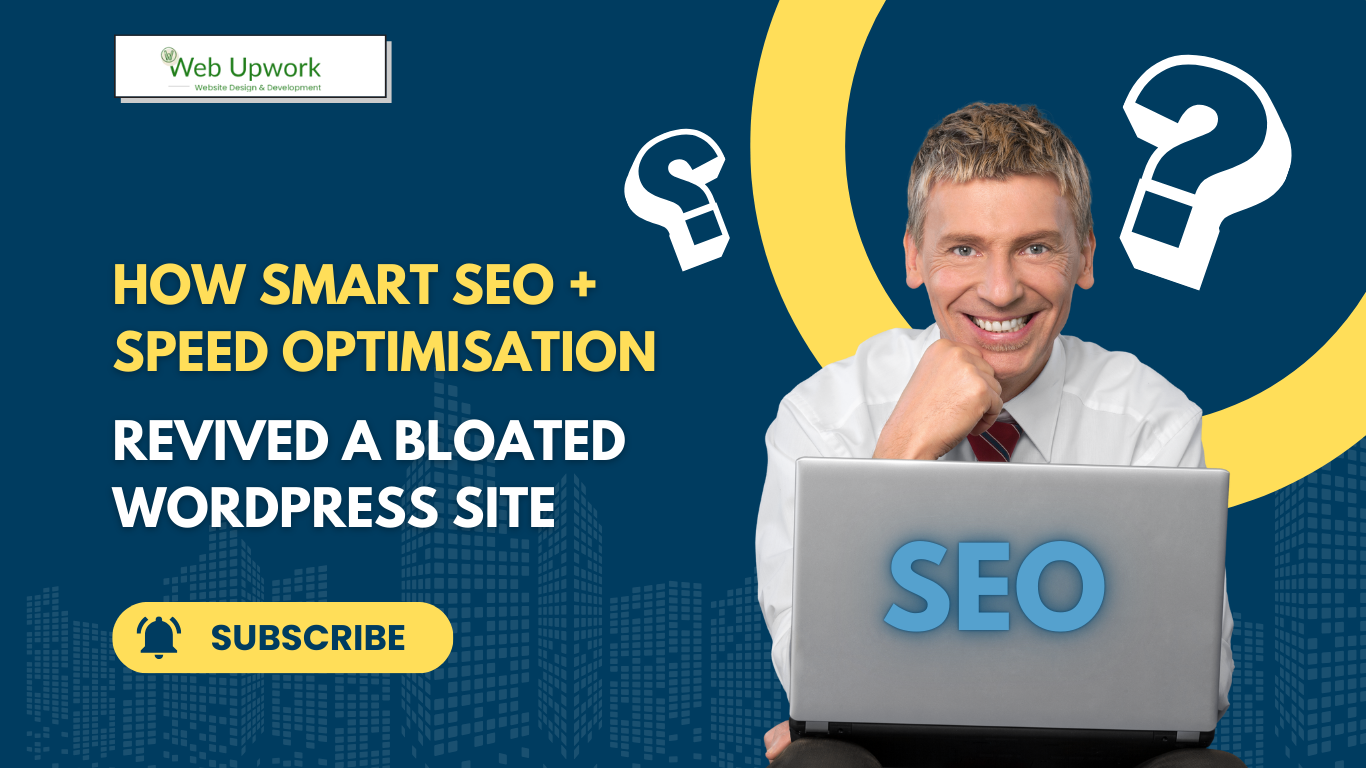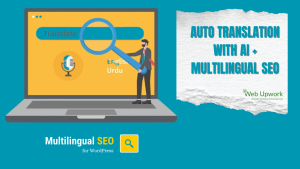In the digital world, your website is often the first impression of your business. But what happens when that impression is slow, clunky, and difficult to navigate? For one of our clients, this was the exact challenge. Their WordPress site looked good on the surface, but under the hood it was bloated with heavy plugins, oversized images, poor coding practices, and no proper optimisation strategy. The result? A website that loaded in over 12 seconds, failed Core Web Vitals, and ranked poorly on search engines.
This blog shares how we completely revived that struggling website by combining smart SEO strategies with advanced speed optimisation techniques. Instead of treating SEO and site performance as two separate issues, we approached them together — because in today’s world, they are directly connected.
🔎 The Challenges We Found
When we audited the website, the problems became clear:
Slow performance: Load time above 12 seconds.
Plugin overload: More than 40 plugins, many outdated or unused.
Heavy theme: A feature-rich theme that added unnecessary scripts and CSS.
Uncompressed media: Images were in large file sizes, hurting speed.
Poor SEO structure: Missing meta tags, broken links, and poor internal linking.
Declining traffic: Organic search visibility had dropped significantly.
The combination of poor SEO practices and bad site performance was stopping the website from reaching its audience.
⚙️ Our Step-by-Step Optimisation Strategy
1. Website Cleanup & Code Optimisation
We removed unnecessary plugins and scripts, shifted to a lightweight SEO-friendly theme, and cleaned up the database. CSS and JavaScript were minified, and render-blocking resources were deferred. This gave the website a strong, lightweight foundation.
2. Image & Media Optimisation
We converted bulky images into next-gen formats like WebP, compressed files without losing quality, and enabled lazy loading for all visuals and iFrames. This cut image weight by over 70%.
3. Caching & Server Optimisation
We set up page caching, object caching (Redis), and browser caching. Combined with a CDN (Content Delivery Network), the site’s content started loading faster for users worldwide.
4. SEO Fixes & Best Practices
We restructured the site with a clear hierarchy, optimised meta titles and descriptions, and improved internal linking. Crawl errors were fixed, broken links removed, and schema markup was added for better search visibility.
5. Core Web Vitals Focus
Google now prioritises sites that score well on LCP, CLS, and FID. We improved these by streamlining fonts, preloading key resources, and reducing unnecessary DOM elements.
📈 The Results After 90 Days
The transformation was dramatic:
Load time improved from 12s → under 2s.
Core Web Vitals passed across both desktop and mobile.
Organic traffic grew by 45% within three months.
Bounce rate dropped by 35%, keeping users engaged longer.
Conversion rate increased as visitors found the site faster and easier to navigate.
The client went from being frustrated with their “pretty but broken” website to enjoying a fast, SEO-optimised site that attracted and converted customers.
📝 Final Thoughts
A bloated website isn’t just a technical problem — it’s a business problem. Slow load times frustrate users, lower SEO rankings, and reduce sales. The solution lies in a combined approach: Smart SEO ensures your site is discoverable, while speed optimisation ensures users stay and engage.
If your WordPress site feels sluggish or invisible in search results, it might be time for a full revival. With the right SEO and performance strategy, even a bloated website can become a high-performing asset for your business.
Product Schema
{% if template.name == 'product' %}
<script type="application/ld+json">
{
"@context": "https://schema.org/",
"@type": "Product",
"name": "{{ product.title }}",
{%- if product.featured_media -%}
{%- assign media_size = product.featured_media.preview_image.width | append: 'x' -%}
"image": [
{{ product.featured_media | img_url: media_size | prepend: "https:" | json }}
],
{%- endif -%}
"description": {{ product.description | strip_html | json }},
"sku": "{{ current_variant.sku }}",
"mpn": "{{ current_variant.barcode }}",
"brand": {
"@type": "Brand",
"name": "District A Design"
},
"review": {
"@type": "Review",
"reviewRating": {
"@type": "Rating",
"ratingValue": "5",
"bestRating": "5"
},
"author": {
"@type": "Person",
"name": "Example site"
}
},
"aggregateRating": {
"@type": "AggregateRating",
"ratingValue": "5",
"reviewCount": "5"
},
"offers": {
"@type": "Offer",
"url" : {{ shop.url | append: variant.url | json }},
"priceCurrency" : {{ cart.currency.iso_code | json }},
"price" : {{ current_variant.price | divided_by: 100.00 | json }},
"priceValidUntil": "{{ 'now' | date: '%s' | plus: 31536000 | date: '%Y-%m-%d' | uri_encode | replace:'+','%20' }}",
"itemCondition": "https://schema.org/NewCondition",
"availability" : "http://schema.org/{% if product.available %}InStock{% else %}OutOfStock{% endif %}"
}
}
</script>
{% endif %}
BreadcrumbList Schema
<script type="application/ld+json">
{
"@context": "https://schema.org",
"@type": "BreadcrumbList",
"itemListElement": [{
"@type": "ListItem",
"position": 1,
"name": "Home",
"item": "https://Examplesite.com/"
},{
"@type": "ListItem",
"position": 2,
"name": "{{ product.title }}",
"item": "{{ shop.url }}{{ product.url }}"
}]
}
</script>





